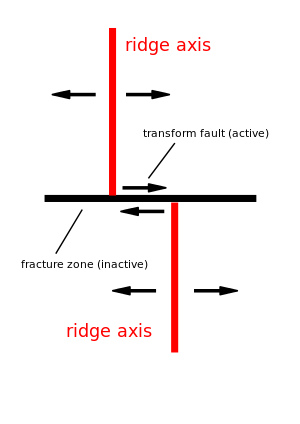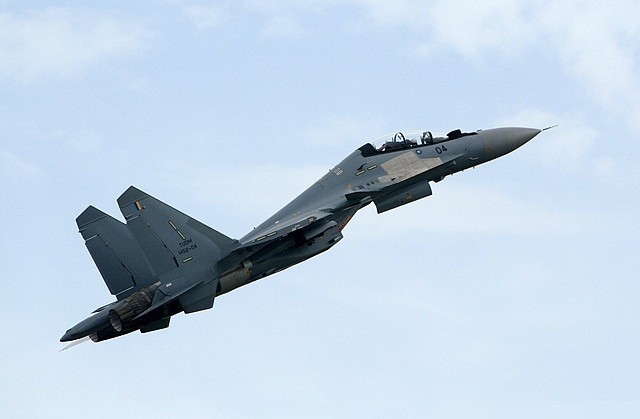Offset agreement Wikipedia the free encyclopedia
Post on: 16 Март, 2015 No Comment

This article possibly contains original research . Please improve it by verifying the claims made and adding inline citations. Statements consisting only of original research should be removed. (July 2011)
Defense offset agreements are legal trade practices in the aerospace and military industries. These commercial practices do not need state regulations but, since the purchasers are mostly military departments of sovereign nations comparable to the US Defense Department. many countries have offset laws, public regulations or, alternatively, formal internal offset policies. The international names for these commercial practices connected to weapons trade are various: industrial compensations, industrial cooperation, offsets, industrial and regional benefits, balances, juste retour or equilibrium, to define mechanisms more complex than counter-trade. Offset agreements are protectionist, and distort competition. [ 1 ] [ 2 ]
Counter-trade can also be considered one of the many forms of defense offset, to compensate a purchasing country. [ 3 ] The main difference between a generic offset and counter-trade, both common practices in the international defense trade, is the involvement of money. In counter-trade, goods are paid through barters or other mechanisms without the exchange of money, while in other defense offsets money is the measure and the medium of exchange.
Contents
§ Definition [ edit ]
An offset agreement is an agreement between two parties whereby a supplier agrees to buy products from the party to whom it is selling, in order to win the buyer as a customer and offset the buyer’s outlay. Generally the seller is a foreign company and the buyer is a government that stipulates that the seller must then agree to buy products from companies within their country. Often, the aim of this process is to even-up a country’s balance of trade. [ 4 ] This is frequently an integral part of international defense contracts. [ 5 ]
§ Offset as unfair burden [ edit ]
The U.S. government’s definition of offset agreement is the most crucial, since the U.S. aerospace and defense industry is exporting the majority of the world’s weapons, and therefore engaged in the majority of the world’s offsets. The U.S. has a Commerce Department Division, the Bureau of Industry and Security (BIS), that deals specifically with U.S. defense offset agreements with foreign nations as a main subset of U.S. industrial security. BIS — whose main task is protecting U.S. security from the point of view of export of high technology, fostering commercially acceptable U.S. foreign policy, and protecting U.S. economic interests — deals with U.S. aerospace and defense companies that export defense products, systems or services, involving “offset agreements,” that is, those sales’ collateral or additional agreements requested by purchasers. BIS defines offsets as “mandatory compensations required by foreign governments when purchasing weapon systems and services.” [ 6 ]
The U.S. government underlines the compulsory aspect of this trade practice, since the United States, with other weapons exporting countries, such as Germany and France, opposes offsets as forms of protectionism and harmful transgressions of free market rules. These governments frown on offset agreements, consider them to be both market distorting and inefficient. [ 7 ]
§ Offset as partnership [ edit ]
In 2008 the Brazilian Minister of Strategic Affairs, speaking of a major defense purchase by his country, highlighted this key point: “We will not simply be buyers or clients, but partners.” [ 8 ] The competition by different companies “in offering comparable weapons to a country is also on the level of “sharing” or “partnership” with the purchaser, Roberto Mangabeira Unger added.
§ Offset as marketing tool [ edit ]
In weapons trade, defense contractors are fully aware that offsets are powerful marketing tools to motivate the purchase, by showing and giving additional advantages for the purchasing country besides investing in military equipment. [ 9 ] The U.S. defense industry position seems to be more practical, and somewhat quietly nonaligned with U.S. government economic or political assessment of defense offsets. Generally speaking, one can understand offsets as a widespread sales technique. As such, they are not restricted to weapons sale, they belong to commerce itself, in the same way that rebates, price-pack deals, or loyalty rewards programs do. Understanding “defense offsets” to be part of a sales technique helps to curb the justified yet excessive emphasis on their mandatory nature.
Often, defense offsets are more motivating than the primary defense acquisition, for personal or political reasons. This may seem irrational, but it is part of commerce. If one adds the prevalent political aspect of spending huge public funds on modern weapons, then the motivating significance of defense offsets could not be underestimated in contemporary decision processes of democracies. [ 10 ] Prime defense contractors are well aware of offsets’ power in the psychologies of democracies. As anyone can understand, the seller will include the cost of the “Envelope B,” that is, of the offset and its added value for the purchaser, in its total cost. In other words, the client will pay for the offset; it is not a free lunch. [ 11 ] But the key question is: to what extent is the offset proposal a factor in the consideration of defense contractor’s tender during the evaluation and the decision procedures? Transparency International clearly summarizes that using offsets as marketing tools makes offsets the ideal playground for corruption:
There are three main categories of corruption risk from offsets:
1. Improperly influencing the need for a particular defence acquisition in the first place
2. Influencing the competitive decision for the main contract in non-transparent ways
3. Allowing favours to be repaid to corrupt government officials via the offset contracts
— Defence Offsets: Addressing The Risks Of Corruption & Raising Transparency, Transparency International, 2010 [ 12 ]
The universe of this military niche of offsets trade is sophisticated and less innocuous than commonly believed. In 2000 Daniel Pearl wrote an article about the universe of offsets: “could the sale of U.S. weapons in the Persian Gulf help an oil concern unload gasoline stations in Europe? Yes, under the new logic of international arms deals.” [ 13 ] Pearl describes the new-found world of indirect offsets:
For decades, countries that buy weapons have imposed offset requirements on their suppliers that keep some of the economic benefits of the deal at home.
Now, defense contractors are moving toward more exotic plans to satisfy their growing offset obligations.
Many deals have no relationship to the weapons being sold, and a few have only a tenuous connection to the country that is buying.

— Daniel Pearl [ 14 ]
The market size of the international offset business is related to the volume of international weapons trade in the world. According to SIPRI. in 2007 there were US$ 51 billion of weapons exports, an approximate value because it is open source, and not all weapons deals data are open source information.
§ Defense offset example [ edit ]
Direct Offsets (military and related to the product of the Company S. i.e. the tanks in this example)
Co-production: Nation P chooses one or more local companies to manufacture some components of the tanks, such as turrets and some of the internal components. The actual value of the components is $70 million. Nation P assigns a multiplier of 3, since this develops capabilities of its military industrial base and creates jobs in Nation P. The total credit value for the fulfillment of the overall offset obligation is $70M x 3 = $210M.
Indirect Offsets (civilian and other agreements not related to the production of the weapons item, the tanks. They could be also military or security related, but not directly connected with the main acquisition, i.e. the tanks)
Foreign Direct Investments: Company S makes investments in 5 (defense or non-defense) companies in Nation P. The total value of the investments is $14.5M, and the multiplier is 4, a high multiplier, since Nation P suffers from a chronic lack of Foreign Direct Investments. This makes an additional credit value for Company S of $58M. Technology Transfer: Company S provides water desalination technologies to one Nation P company. This technology is particularly appreciated by Nation P. Its actual value is $20M, but the credit value is 7 times the actual value, that is, $140M. Export Assistance and Marketing: Company S provides commercial assistance to market products and services of a Nation P company in a difficult market, such as, for instance, the Middle East. The assistance is offered for 8 years, at the value of $3M per year. Nation P considers this assistance to export as important to create new revenue streams and jobs for its company, and sets a multiplier of 3. Credit value: $72M. (Since company S is not an expert on marketing and export assistance, it may hire a specialist company to subcontract the job. Such a subcontractor is also known as an “offset fulfiller”).
Nation P controls not only the supply of the military systems or services, but also the implementation of the offsets according to the offset agreement included or related to the main supply contract. This control is within the Minister of Defense and/or Ministry of Economy or Finance, or Ministry of Industry and Trade. Often arms importing nations establish special agencies for the supervision of the defense offsets. [ 16 ]
§ Types of offset [ edit ]
Offset proposals often make a distinction between direct and indirect offset. [ 17 ]
Direct offset is a side agreement that has to do with the main product/service that is bought/sold, that is military equipment, systems, or services. They may be also called military offsets. For example, a buyer of military equipment may be given the right to produce a component of a related technology in the buyer’s country.
Indirect offsets are side agreements that are not directly related to the product/service that is bought/sold. Most people refer to such category of offsets as civilian offsets, though there are many indirect offsets that are not civilian offsets. Indirect offsets may take the form of services, investments, counter-trade and/or co-production. For instance, Greek companies produce part of the Lockheed C-130 that they bought from U.S. The Greek co-production is a U.S. direct offset. Or, in a more sophisticated form of offset involving three countries, Portugal is in charge of the maintenance of Kuwaiti Lockheed Martin aircraft. This is a Portuguese “direct offset, since Portugal bought the aircraft, and is partner in charge of their maintenance. [ 18 ] An investment in a security software company of Romania, or in assisting the export and marketing in difficult areas of a Belgian environmental company are other forms of actual indirect offsets.
The most common types of direct/indirect offsets are:














